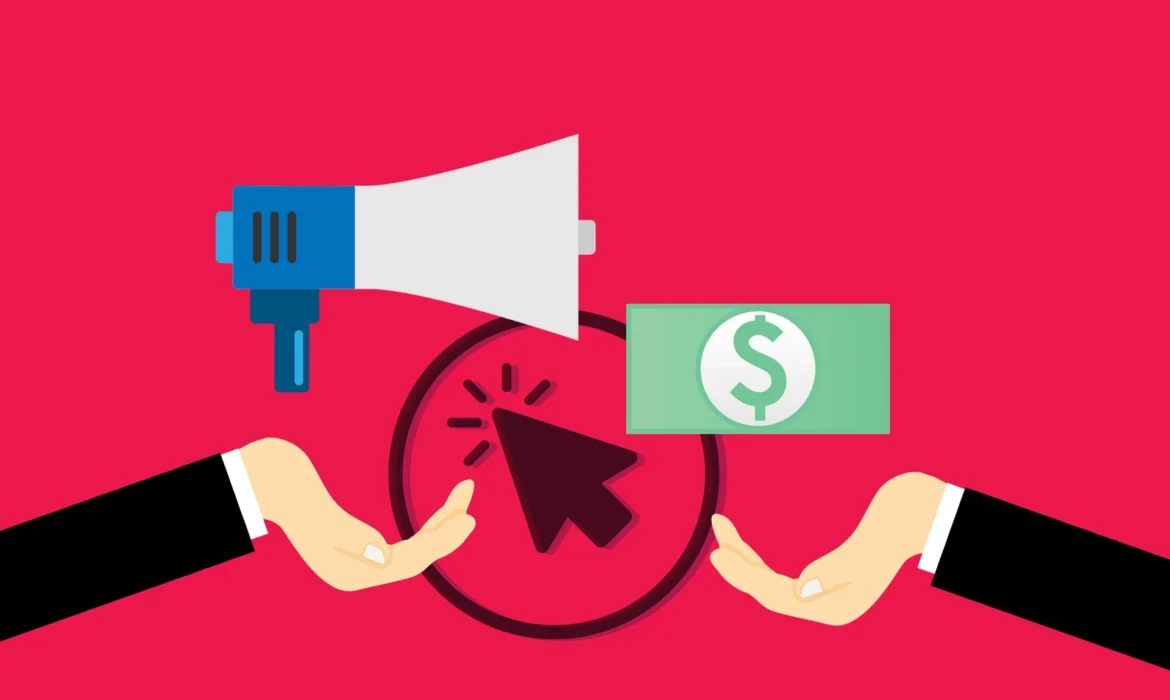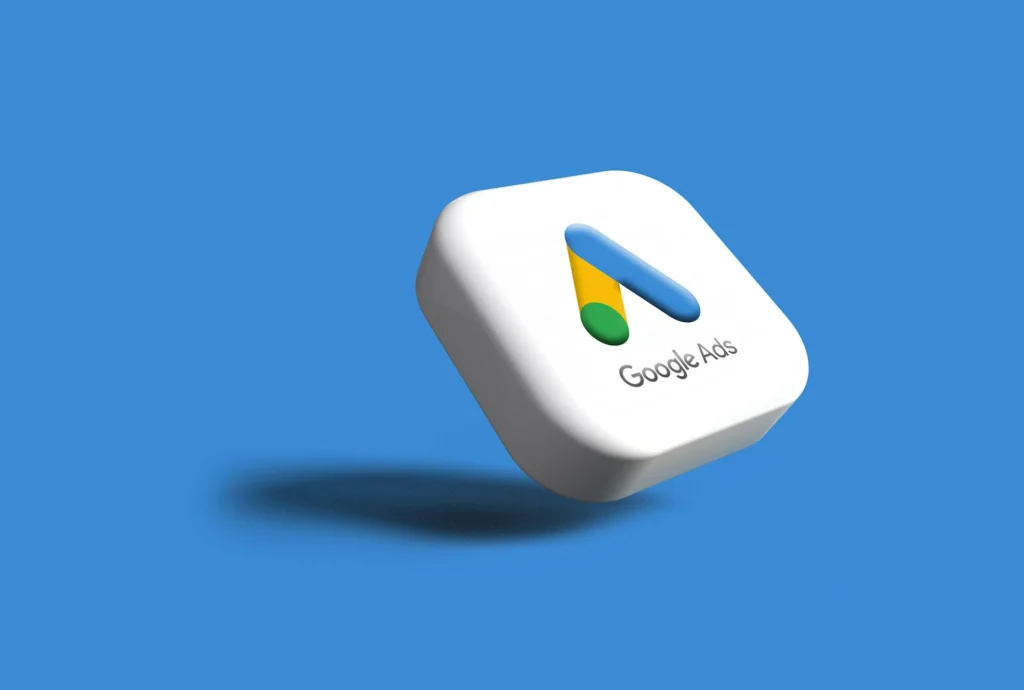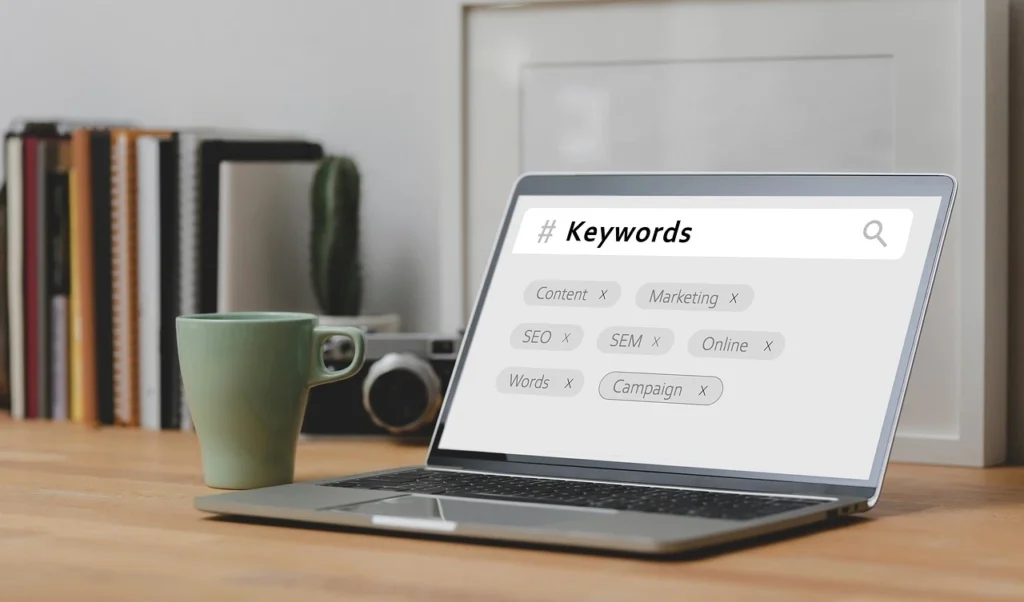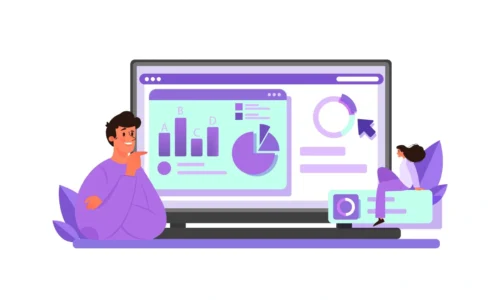What is PPC Marketing? | How does PPC advertising work?

PPC, or Pay-Per-Click, is an online advertising model where advertisers pay a fee each time their ad is clicked. It’s a way of buying visits to your site rather than attempting to “earn” those visits organically.
In essence, it’s a way of buying traffic to your website, rather than attempting to earn those visits organically. Search engine advertising is one of the most popular forms of PPC.
What you’ll learn in this guide:
- What is PPC Marketing?
- How does PPC advertising work?
- What is Google Ads?
- How PPC works in Google Ads
- How to do PPC with Google Ads
- PPC keyword research
- PPC campaign management
- How to get started with PPC
What is PPC Marketing?

PPC, or Pay-Per-Click, is a form of online advertising where advertisers pay a fee each time their ad is clicked. It’s a model widely used across various digital platforms to drive targeted traffic to websites, products, or services. Understanding the intricacies of PPC marketing is essential for businesses aiming to maximize their online presence and attract potential customers effectively.
Key Aspects of PPC Marketing
- Payment Model: Unlike traditional advertising methods where advertisers pay a fixed fee regardless of the ad’s performance, PPC operates on a pay-per-click basis. This means advertisers only pay when a user clicks on their ad, making it a cost-effective advertising option for businesses of all sizes.
- Ad Placement: PPC ads are prominently displayed on search engine results pages (SERPs), social media platforms, websites, and mobile apps. They often appear at the top or bottom of search engine results, marked as sponsored content to distinguish them from organic listings.
- Keyword Targeting: A fundamental aspect of PPC marketing is keyword targeting. Advertisers bid on specific keywords relevant to their target audience. When users search for those keywords, the ads are triggered, ensuring they are displayed to users actively seeking related products or services.
How PPC Works
- Ad Auctions: PPC advertising operates through real-time auctions where advertisers compete for ad placement. The ad auction process considers various factors, including bid amount, ad quality, relevance, and expected click-through rate (CTR).
- Bid Strategy: Advertisers set a maximum bid they are willing to pay for each click on their ad. However, winning the auction doesn’t solely depend on the highest bid; ad quality and relevance play crucial roles in determining ad rank and placement.
- Ad Rank Calculation: Ad rank, the position of an ad on the SERP, is calculated based on the advertiser’s bid and Quality Score. Quality Score evaluates the relevance and quality of the ad, landing page experience, and expected CTR. Advertisers with high-quality ads may achieve higher ad ranks with lower bids.
Benefits of PPC Marketing
- Instant Visibility: PPC advertising offers instant visibility, allowing businesses to reach their target audience immediately. Unlike organic search efforts that may take time to gain traction, PPC ads appear prominently on SERPs, driving immediate traffic to websites.
- Targeted Audience Reach: With precise keyword targeting and audience segmentation options, PPC enables businesses to reach their ideal customers at the right time and place. Advertisers can tailor their campaigns based on demographics, interests, location, and browsing behavior, ensuring maximum relevance and engagement.
- Measurable Results: PPC platforms provide comprehensive analytics and reporting tools, allowing advertisers to track campaign performance in real-time. Metrics such as clicks, impressions, conversions, and ROI enable businesses to measure the effectiveness of their advertising efforts and make data-driven decisions for optimization.
Challenges and Considerations
- Competition: The competitive nature of PPC advertising can lead to higher bid prices for popular keywords, especially in competitive industries. Advertisers must carefully manage their budgets and bidding strategies to maintain cost-effectiveness.
- Ad Fatigue: Overexposure to the same ads can result in ad fatigue among users, leading to decreased click-through rates and conversions. Rotating ad creatives, testing different ad formats, and refreshing campaigns regularly can help mitigate ad fatigue and maintain engagement.
- Quality Assurance: Maintaining high-quality ads and landing pages is essential for maximizing PPC campaign performance. Advertisers should focus on creating relevant, compelling ad copy, optimizing landing page experiences, and adhering to platform guidelines to enhance user satisfaction and ad relevance.
Future Trends in PPC Marketing
- AI and Automation: The integration of artificial intelligence (AI) and machine learning technologies is revolutionizing PPC advertising. Automated bidding strategies, ad optimization, and audience targeting capabilities are becoming more sophisticated, enabling advertisers to streamline campaign management and improve results.
- Voice Search Optimization: The rise of voice-activated devices and virtual assistants is reshaping search behavior, prompting advertisers to optimize their PPC campaigns for voice search queries. Tailoring ad copy and keywords to match conversational queries and long-tail phrases can enhance visibility and capture voice search traffic effectively.
- Cross-Platform Integration: As users interact with multiple devices and platforms throughout their customer journey, cross-platform integration is becoming increasingly important in PPC marketing. Seamless integration across search engines, social media platforms, and display networks allows advertisers to deliver consistent messaging and maximize audience reach across channels.
How does PPC advertising work?

PPC advertising operates on a complex yet efficient system that involves bidding, ad auctions, and ad placement algorithms. Understanding the intricacies of how PPC advertising works is essential for advertisers to maximize their ROI and achieve their marketing objectives effectively.
1. Ad Auctions and Bidding
Ad Auction Process
- Real-Time Auctions: When a user enters a search query, the search engine triggers an ad auction to determine which ads to display.
- Bid Amount: Advertisers bid on specific keywords relevant to their target audience. The bid amount represents the maximum they are willing to pay for a click on their ad.
Factors Influencing Ad Rank
- Bid Amount: While bid amount is a significant factor, it’s not the sole determinant of ad rank.
- Quality Score: Quality Score evaluates the relevance and quality of the ad, landing page experience, and expected click-through rate (CTR).
- Ad Extensions and Formats: Ad extensions and formats, such as sitelinks and callouts, can enhance ad visibility and performance.
2. Keyword Targeting and Ad Placement
Keyword Targeting
- Relevant Keywords: Advertisers select keywords relevant to their products or services to target specific search queries.
- Match Types: Keywords can be broad match, phrase match, exact match, or broad match modifier, allowing advertisers to control the specificity of keyword targeting.
Ad Placement Algorithms
- Ad Rank Calculation: Ad rank determines the position of an ad on the search engine results page (SERP). It’s calculated based on bid amount, Quality Score, and other factors.
- Auction Insights: Advertisers can gain insights into their competitors’ ad performance, bid strategies, and ad position through auction insights reports.
3. Ad Performance and Optimization
Performance Metrics
- Clicks: The number of times users click on an ad.
- Impressions: The number of times an ad is displayed.
- Click-Through Rate (CTR): The ratio of clicks to impressions, indicating ad engagement.
- Conversion Rate: The percentage of users who complete a desired action, such as making a purchase or filling out a form.
Optimization Strategies
- Bid Adjustments: Advertisers can adjust bids based on factors like device type, location, time of day, and audience demographics.
- Ad Copy Testing: Testing different ad creatives, headlines, and calls-to-action to optimize ad performance.
- Landing Page Optimization: Ensuring the landing page provides a seamless and relevant user experience to improve conversion rates.
4. Budget Management and ROI Analysis
Budget Allocation
- Daily Budget: Advertisers set a maximum daily budget to control ad spend and prevent overspending.
- Campaign Budget Optimization: Platforms like Facebook Ads offer campaign budget optimization, automatically distributing budget to top-performing ad sets.
ROI Analysis
- Conversion Tracking: Implementing conversion tracking to measure the effectiveness of PPC campaigns and calculate return on investment (ROI).
- Attribution Modeling: Analyzing the contribution of each touchpoint in the customer journey to understand the impact of PPC advertising on conversions.
5. Emerging Trends and Future Outlook
AI and Machine Learning
- Automated Bidding: Leveraging AI-powered bidding strategies to optimize bids in real-time and improve ad performance.
- Ad Personalization: Using machine learning algorithms to deliver personalized ad experiences based on user behavior and preferences.
Voice Search Optimization
- Voice-Activated Devices: Adapting PPC campaigns for voice search queries to capture the growing number of users using voice-activated devices like smart speakers and virtual assistants.
Cross-Platform Integration
- Unified Advertising Ecosystem: Integrating PPC advertising across multiple platforms and channels to deliver consistent messaging and maximize audience reach.
Conclusion
In conclusion, PPC advertising operates on a dynamic and sophisticated system that involves ad auctions, keyword targeting, ad placement algorithms, performance optimization, budget management, and ROI analysis.
By understanding the intricacies of how PPC advertising works and staying abreast of emerging trends, advertisers can leverage this powerful marketing channel to drive targeted traffic, increase conversions, and achieve their business objectives effectively in today’s competitive digital landscape.
What is Google Ads?

Google Ads, formerly known as Google AdWords, is Google’s online advertising platform that allows advertisers to display their ads on Google’s search engine results pages (SERPs), as well as on Google’s network of partner websites. It’s one of the most popular and effective pay-per-click (PPC) advertising platforms available today.
1. Platform Overview
Ad Formats
- Search Ads: Text-based ads that appear at the top or bottom of Google search results pages when users enter relevant search queries.
- Display Ads: Image or multimedia ads that appear on websites within Google’s Display Network, reaching a vast audience of potential customers.
- Video Ads: Video-based ads displayed on YouTube and across the Google Display Network, capturing users’ attention with engaging video content.
- Shopping Ads: Product-based ads that showcase specific products along with images, prices, and other details, appearing in Google search results and the Google Shopping tab.
Campaign Types
- Search Campaigns: Targeting users actively searching for specific products or services on Google.
- Display Campaigns: Targeting users browsing websites within Google’s Display Network based on their interests, demographics, and online behavior.
- Video Campaigns: Promoting video content on YouTube and across the Google Display Network to reach a wide audience.
- Shopping Campaigns: Showcasing products directly within Google search results and the Google Shopping tab to drive sales and conversions.
2. Ad Auctions and Bidding
Real-Time Auctions
- Ad Rank Determination: Google Ads operates on a real-time auction system where advertisers bid on keywords relevant to their target audience.
- Ad Positioning: Ad position on SERPs is determined by a combination of bid amount, ad quality, and expected click-through rate (CTR).
Bidding Strategies
- Manual CPC (Cost-Per-Click): Advertisers manually set maximum CPC bids for their keywords, giving them full control over bid amounts.
- Automated Bidding: Google’s automated bidding strategies use machine learning algorithms to adjust bids in real-time based on performance goals such as maximizing clicks, conversions, or conversion value.
3. Targeting and Audience Segmentation
Keyword Targeting
- Relevant Keywords: Advertisers select keywords relevant to their products or services to target users searching for specific terms.
- Match Types: Keywords can be broad match, phrase match, exact match, or broad match modifier, allowing advertisers to control the specificity of keyword targeting.
Audience Targeting
- Demographics: Targeting users based on age, gender, household income, and parental status.
- Interests and Behaviors: Targeting users with specific interests, hobbies, and online behaviors.
- Remarketing: Reaching users who have previously visited your website or interacted with your ads, encouraging them to return and complete a desired action.
4. Performance Tracking and Optimization
Performance Metrics
- Clicks: The number of times users click on an ad.
- Impressions: The number of times an ad is displayed.
- Click-Through Rate (CTR): The ratio of clicks to impressions, indicating ad engagement.
- Conversion Rate: The percentage of users who complete a desired action, such as making a purchase or filling out a form.
Optimization Strategies
- Ad Copy Testing: Testing different ad creatives, headlines, and calls-to-action to optimize ad performance.
- Keyword Optimization: Monitoring keyword performance and adjusting bids and targeting to maximize ROI.
- Landing Page Optimization: Ensuring landing pages provide a seamless and relevant user experience to improve conversion rates.
5. Budget Management and ROI Analysis
Budget Allocation
- Daily Budget: Advertisers set a maximum daily budget to control ad spend and prevent overspending.
- Campaign Budget Optimization: Automatically distributing budget to top-performing campaigns or ad sets to maximize results.
ROI Analysis
- Conversion Tracking: Implementing conversion tracking to measure the effectiveness of Google Ads campaigns and calculate return on investment (ROI).
- Attribution Modeling: Analyzing the contribution of each touchpoint in the customer journey to understand the impact of Google Ads on conversions.
Conclusion
In conclusion, Google Ads is a powerful and versatile online advertising platform that enables advertisers to reach their target audience effectively across various channels and devices.
By understanding the platform’s features, capabilities, and optimization strategies, advertisers can leverage Google Ads to drive targeted traffic, increase conversions, and achieve their business objectives successfully in today’s competitive digital landscape.
How PPC works in Google Ads

Google Ads operates on a pay-per-click (PPC) model where advertisers bid on specific keywords to display their ads on Google’s search engine results pages (SERPs) and other Google properties. Understanding the intricacies of how PPC works within the Google Ads platform is essential for advertisers to maximize their advertising investment and achieve their marketing objectives effectively.
1. Auction Process and Ad Ranking
Real-Time Ad Auctions
- Triggering Ads: When a user enters a search query, Google triggers an ad auction to determine which ads to display on the search results page.
- Bidding on Keywords: Advertisers bid on keywords relevant to their target audience. The bid amount represents the maximum they are willing to pay for a click on their ad.
Ad Rank Calculation
- Bid Amount: While bid amount is a significant factor, it’s not the sole determinant of ad rank.
- Quality Score: Quality Score evaluates the relevance and quality of the ad, landing page experience, and expected click-through rate (CTR).
- Expected Impact of Ad Extensions and Formats: Ad extensions and ad formats, such as sitelinks and callouts, can enhance ad visibility and performance.
2. Keyword Targeting and Ad Placement
Keyword Targeting
- Selection of Relevant Keywords: Advertisers select keywords relevant to their products or services to target users searching for specific terms.
- Match Types: Keywords can be broad match, phrase match, exact match, or broad match modifier, allowing advertisers to control the specificity of keyword targeting.
Ad Placement Algorithms
- Determining Ad Position: Ad position on SERPs is determined by a combination of bid amount, ad quality, and expected CTR.
- Ad Extensions and Formats: Ad extensions and ad formats play a crucial role in ad positioning and visibility.
3. Bidding Strategies and Budget Management
Bidding Strategies
- Manual CPC (Cost-Per-Click): Advertisers manually set maximum CPC bids for their keywords, giving them full control over bid amounts.
- Automated Bidding: Google’s automated bidding strategies use machine learning algorithms to adjust bids in real-time based on performance goals such as maximizing clicks, conversions, or conversion value.
Budget Allocation
- Daily Budget: Advertisers set a maximum daily budget to control ad spend and prevent overspending.
- Campaign Budget Optimization: Automatically distributing budget to top-performing campaigns or ad sets to maximize results.
4. Targeting Options and Audience Segmentation
Keyword and Audience Targeting
- Keyword Targeting: Targeting users based on specific keywords they enter in Google search.
- Audience Targeting: Targeting users based on demographics, interests, and online behavior.
Remarketing
- Reaching Past Visitors: Remarketing allows advertisers to reach users who have previously visited their website or interacted with their ads, encouraging them to return and complete a desired action.
5. Performance Tracking and Optimization
Performance Metrics
- Clicks, Impressions, CTR: Monitoring ad performance metrics to gauge effectiveness and engagement.
- Conversion Tracking: Implementing conversion tracking to measure the effectiveness of Google Ads campaigns and calculate return on investment (ROI).
Optimization Strategies
- Ad Copy Testing: Testing different ad creatives, headlines, and calls-to-action to optimize ad performance.
- Keyword Optimization: Monitoring keyword performance and adjusting bids and targeting to maximize ROI.
- Landing Page Optimization: Ensuring landing pages provide a seamless and relevant user experience to improve conversion rates.
6. Emerging Trends and Future Outlook
AI and Machine Learning
- Automated Bidding: Leveraging AI-powered bidding strategies to optimize bids in real-time and improve ad performance.
- Ad Personalization: Using machine learning algorithms to deliver personalized ad experiences based on user behavior and preferences.
Voice Search Optimization
- Adapting PPC Campaigns: Adapting PPC campaigns for voice search queries to capture the growing number of users using voice-activated devices like smart speakers and virtual assistants.
Cross-Platform Integration
- Unified Advertising Ecosystem: Integrating PPC advertising across multiple platforms and channels to deliver consistent messaging and maximize audience reach.
Conclusion
In conclusion, PPC advertising within the Google Ads platform operates on a dynamic and sophisticated system that involves ad auctions, keyword targeting, bidding strategies, audience segmentation, performance tracking, and optimization.
By understanding the intricacies of how PPC works in Google Ads and staying abreast of emerging trends, advertisers can leverage this powerful marketing channel to drive targeted traffic, increase conversions, and achieve their business objectives successfully in today’s competitive digital landscape.
How to do PPC with Google Ads
To start with PPC using Google Ads, follow these steps:
- Set up your Google Ads account: Sign up for Google Ads and create your account.
- Define your campaign objectives: Decide what you want to achieve with your PPC campaigns, whether it’s driving website traffic, generating leads, or increasing sales.
- Keyword research: Conduct thorough keyword research to identify relevant keywords for your business. Use tools like Google Keyword Planner to find keywords with high search volume and low competition.
- Create compelling ads: Write compelling ad copy that entices users to click. Include relevant keywords in your ad copy and highlight unique selling points.
- Set your budget and bidding strategy: Determine your daily budget and bidding strategy. You can choose from options like manual CPC bidding, automated bidding, or enhanced CPC bidding.
- Monitor and optimize your campaigns: Regularly monitor the performance of your PPC campaigns and make adjustments as needed. Test different ad creatives, keywords, and bidding strategies to improve your ROI.
PPC keyword research

Keyword research is a crucial aspect of PPC advertising. It involves identifying the keywords and phrases your target audience is using when searching for products or services like yours.
Use keyword research tools like Google Keyword Planner, SEMrush, or Ahrefs to discover relevant keywords with high search volume and low competition. Focus on long-tail keywords that are specific to your niche and have a higher likelihood of conversion.
PPC campaign management

Effective PPC campaign management is essential for maximizing the performance of your ads and achieving your advertising goals.
It involves tasks such as:
- Monitoring campaign performance
- Adjusting bids and budgets
- Testing ad creatives and landing pages
- Adding negative keywords to prevent irrelevant clicks
- Optimizing ad targeting and scheduling
- Tracking conversions and ROI
How to get started with PPC
To get started with PPC, follow these steps:
- Educate yourself: Learn about the basics of PPC advertising and familiarize yourself with popular platforms like Google Ads and Microsoft Advertising.
- Set clear objectives: Define your PPC goals and objectives, whether it’s increasing website traffic, generating leads, or boosting sales.
- Do keyword research: Identify relevant keywords for your business and target audience. Use keyword research tools to discover high-performing keywords with low competition.
- Create compelling ads: Write persuasive ad copy that grabs attention and entices users to click. Use relevant keywords in your ad headlines and descriptions.
- Set up tracking: Implement conversion tracking to measure the effectiveness of your PPC campaigns. Track key metrics like clicks, conversions, and ROI.
- Monitor and optimize: Regularly monitor the performance of your PPC campaigns and make adjustments as needed. Test different ad creatives, targeting options, and bidding strategies to improve your results.
By following these steps and staying proactive in managing your PPC campaigns, you can drive targeted traffic to your website and achieve your advertising objectives effectively.
This article provides a comprehensive overview of PPC marketing, covering its definition, workings, Google Ads, PPC campaign management, and tips for getting started with PPC advertising. Whether you’re new to PPC or looking to enhance your existing campaigns, this guide offers valuable insights to help you succeed in the world of paid advertising.
Conclusion
In conclusion, PPC marketing offers a powerful and flexible advertising solution for businesses seeking to enhance their online visibility, attract targeted traffic, and drive conversions.
By understanding the key principles, strategies, and emerging trends in PPC advertising, businesses can leverage this dynamic marketing channel to achieve their advertising goals effectively and stay ahead in today’s competitive digital landscape.





